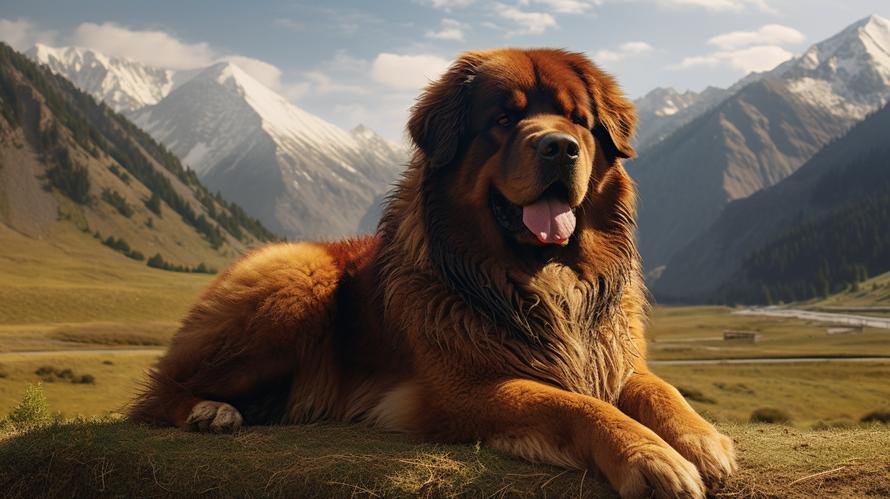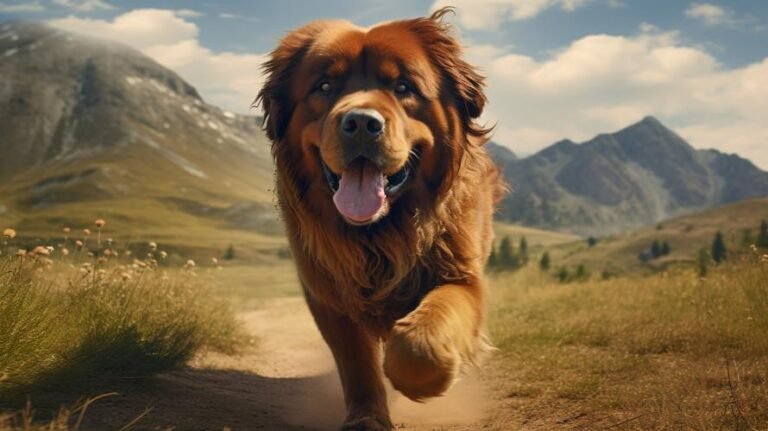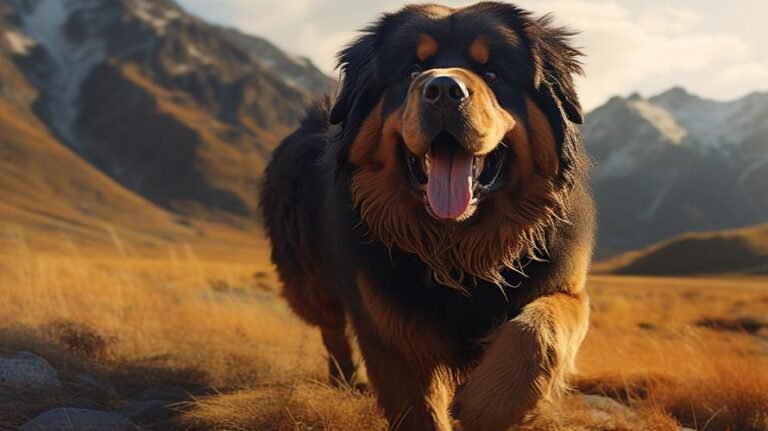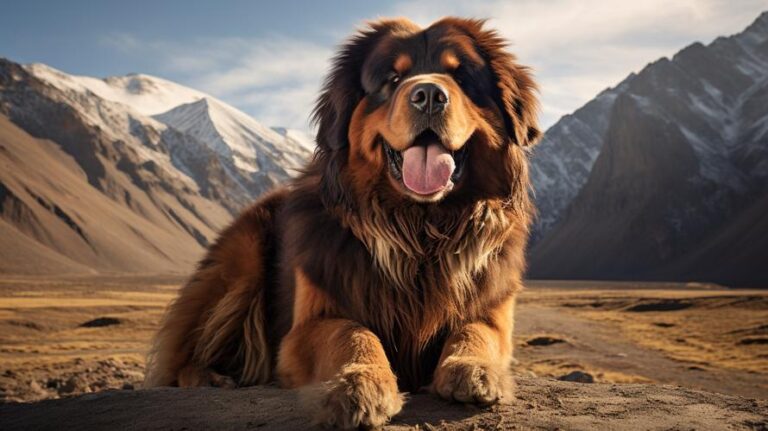Picture for a moment, a canine reminiscent of a lion. An imposing creature of gigantic stature that boasts a vast, bushy mane, powerful jaw, and penetrating gaze. This regal beast is not a product of your imagination nor a mythical creature of folklore — it’s the Tibetan Mastiff.
Amazingly, these Tibetan giants are not a figment of your imagination, they are real-life, living, and breathing dogs that have existed for centuries. Originating from the Tibetan Plateau, they were known as the ‘guard dog of the Himalayas.’ They served as diligent protectors of the villagers and their flocks from predators such as wolves and snow leopards. They are not just large in size; they possess an immense reserve of courage too.
However, as fascinating as these enormous apparitions may be, they come along with a set of, let’s say, quirks that make them both charming and daunting as a pet. They are one of the most high-maintenance dog breeds you may come across.
Their tumultuous life story begins with a fascinating myth. Legend has it that Tibetan Mastiffs are the spirits of monks and nuns who weren’t deemed worthy of being reincarnated as humans or sent to the Heavenly realm. Instead, they are said to have been reincarnated into these guardians of the Himalayas, forever stuck in the cycle of protecting and serving. And while this might just be folklore, anyone who has ever looked into the wise and ancient-looking eyes of a Tibetan Mastiff might tell you otherwise.
Now, envision sharing your space with this colossal canine. Enchanting as it may seem, the question you must ask is this – are you ready to provide for their unique needs in terms of space, grooming, diet, exercise, training and healthcare? Let’s explore these aspects in detail, making your choice an informed one.
Consider space before the breed. Tibetan Mastiffs are massive dogs. Full-grown males can range anywhere from 90 to 150 pounds and stand tall at about 26 inches. They require ample indoor and outdoor space to stretch their large limbs, and an apartment setting might not just cut it for these Tibetan giants.
Next comes the grooming, and trust me, it’s not for the faint-hearted. Tibetan Mastiffs sport a dense double coat that insulates them against the harsh weather of the Himalayas. So, guess what happens when these fury beasts shed? Well, Winter is Coming! And with it, comes an avalanche of hair. Brace yourself for an intense shedding season annually, and expect regular grooming needs throughout the year.
As for their diet, yes, they can eat a lot. They need a high protein diet to maintain their robust health and powerful strength. However, Tibetan Mastiffs are also known for their unique tendency to self-regulate food intake. Yet, mindful portion control and quality food will be the mantra.
While they may resemble a bear, their exercise needs aren’t as menacing. Tibetan Mastiffs are not high-energy dogs. They enjoy lounging around and casual walks rather than rigorous exercise routines. However, remember their natural instinct to guard; they need mental stimulation to ensure they don’t get bored and destructive.
Training these giants is another challenging arena. They are smart, independent, and sometimes downright stubborn. They will not back away from a battle of wills, and will try to assert dominance if you let them. Thus, firm and consistent training from a young age is a prerequisite for owning a Tibetan Mastiff.
Healthcare needs for the breed are consistent with their large breed status. While generally healthy, they can be prone to certain health conditions, such as hip dysplasia, hypothyroidism, and eye disorders. Regular health screenings and good veterinary care should keep them hearty and healthy for their average lifespan of 10 to 12 years.
To top it all off, the Tibetan Mastiffs are nocturnal by nature – a throwback to their days as night-time protectors of flocks in Tibet. If left outside at night, they might unleash a deep, powerful bark that can echo around the neighborhood, earning you the wrath of your sleep-deprived neighbors.
So, is a Tibetan Mastiff a high-maintenance dog? The answer is a resounding yes! But if you’ve read through this post and find yourself still fascinated by these majestic creatures you might just be the perfect companion for a Tibetan Mastiff.
Remember, providing quality care requires patience, time, and knowledge. Unexpected vet visits and grooming sessions, the larger than life diet, a bigger space, and firm yet constructive training are all part and parcel of the journey. But as you reminisce about the bond you share with your Tibetan behemoth, watching them peacefully snoring away on their supersized dog bed at the end of the day, you might find that it’s undeniably worth it.



